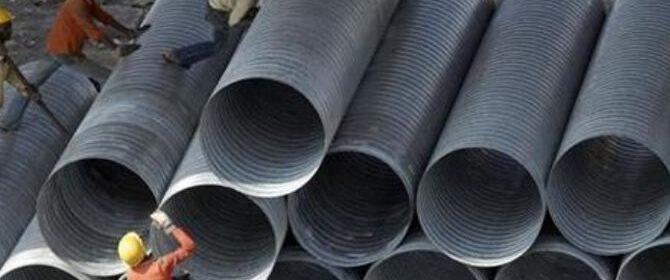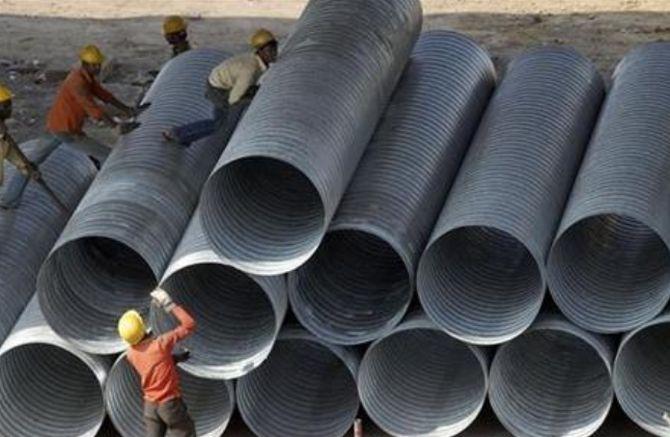Steel firms prep for festivals, see demand by auto, consumer goods sectors

The festive season will mean business for the steel industry as it is the time when automotive and consumer appliance companies bump up demand to prepare for higher sales, experts have said.
Ranjan Dhar, chief marketing officer at ArcelorMittal Nippon Steel India (AM/NS India), said that bookings by auto and consumer appliance industries are 20 per cent higher ahead of the festive season compared to last year.
“While this could be for a couple of months, it could normalise later at approximately 10 per cent,” he said.
The automotive industry is getting good traction on its steel orders, said Jayant Acharya, joint managing director and chief executive officer of JSW Steel.
“The festive season will pull in demand from consumer appliances segments as well.”
Auto and auto ancillary industries account for about 10-12 per cent of end-use consumption of steel and consumer goods 8-10 per cent.
Infrastructure and construction sectors consume the most steel (60 per cent).
Another major steel producer said that across sectors, especially in infrastructure and auto, the outlook for steel consumption in the domestic market was positive.
Data in the Index of Industrial Production (IIP) showed that consumer durables output fell 2.7 per cent in July compared to the year-ago period.
Acharya, however, said that steel demand for some appliances is picking up in preparation of the festive season after a seasonal dip in monsoon.
There has been a notable shift in the demand of various sectors, Dhar said. “In the automobile market in India, SUVs that used to account for about 20-25 per cent of sales now constitute about 40 per cent.
“This change not only translates to higher demand for steel but also an increased need for value-added and high-tensile steel.”
“In the consumer appliances space, there’s a trend toward larger washing machines, further bolstering the steel demand,” he said.
Demand growth for steel is primarily domestic.
In the first five months of this financial year (FY24), April-August, domestic steel demand grew by 13.1 per cent.
Government capital expenditure (capex) increased 59 per cent year-on-year (YoY) in Q1 FY24, driving demand for steel.
Acharya said government investment in infrastructure continued to be strong and there was a large frontloading in the first five months.
“The entire ecosystem is seeing increased activity on the back of infrastructure expenditure; manufacturing activity has also improved,” he said.
The increased activity has pushed up prices as well.
SteelMint data shows that the increase in steel rebar in long products is at 8.37 per cent since July.
The average monthly price of hot rolled coil (HRC) in flat steel has increased 3.51 per cent.
Long steel products are the backbone of any development activity, said Brij Bhushan Agarwal, vice chairman and managing director of Shyam Metalics.
“There is increased spending in infrastructure and construction by state and central governments in a pre-election year.”
The central government, in April-July 2023, used 32 per cent of its total budgeted capex on major infrastructure projects compared to 26 per cent on average in the corresponding period of the past four fiscal years, said a recent CRISIL report.
Spending by the top 17 Indian states that accounted for 90 per cent of total state capex marked an 80 per cent surge in the first quarter of FY24 compared to the same period last year, said the report.
The dampener for the steel sector is the slowing down of global markets.
India’s finished steel exports saw a marginal growth of 0.6 per cent in April-August of FY24.
According to ratings agency ICRA, a recovery was unlikely for the rest of the fiscal and finished steel exports were likely to witness a marginal 1-2 per cent contraction in FY2024.
There are challenges on the horizon, Dhar said.
“After a long time, China is set to reach over 95 million tonnes in exports this year at the current run rate while it was about 65 million tonnes last year.
“This surge in Chinese exports raises concerns for global trade.”
Disclaimer: This article is meant for information purposes only. This article and information do not constitute a distribution, an endorsement, an investment advice, an offer to buy or sell or the solicitation of an offer to buy or sell any securities/schemes or any other financial products/investment products mentioned in this article to influence the opinion or behaviour of the investors/recipients.
Any use of the information/any investment and investment related decisions of the investors/recipients are at their sole discretion and risk. Any advice herein is made on a general basis and does not take into account the specific investment objectives of the specific person or group of persons. Opinions expressed herein are subject to change without notice.
Source: Read Full Article

